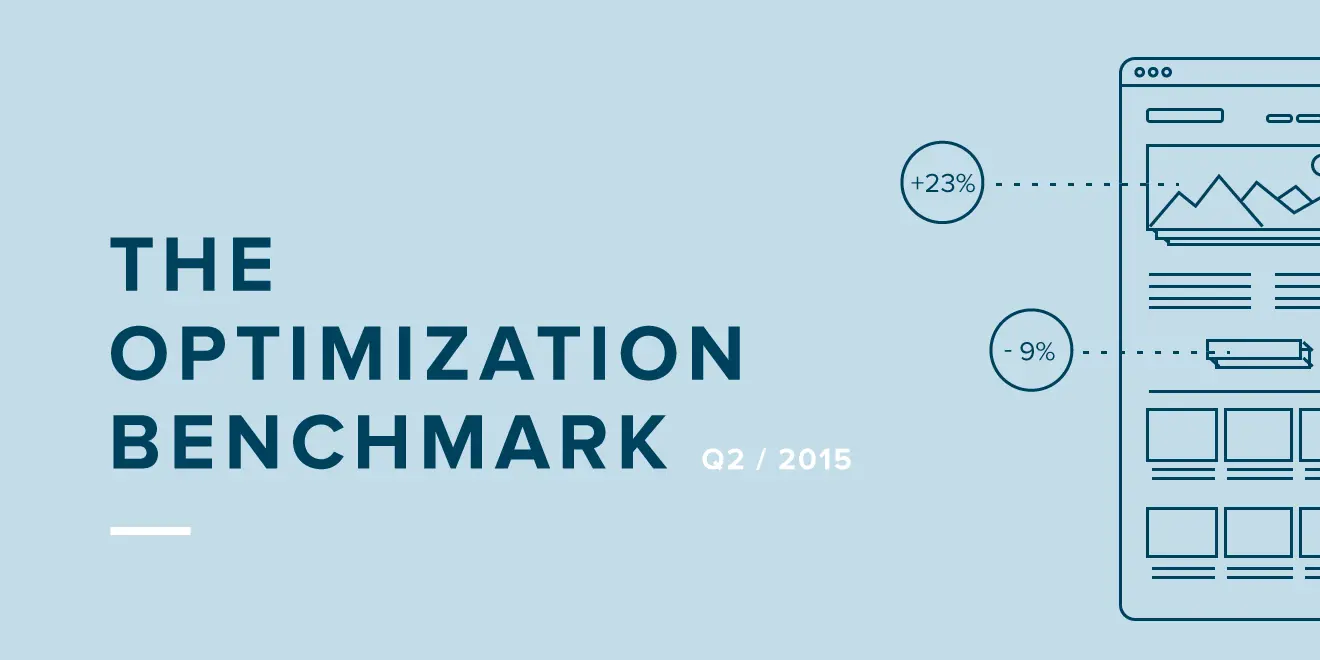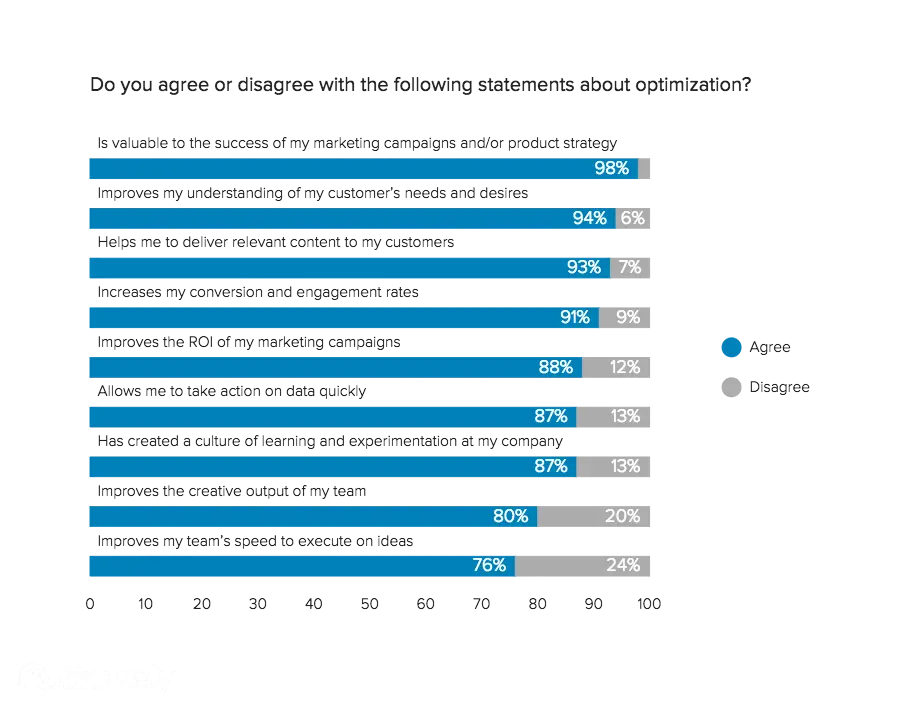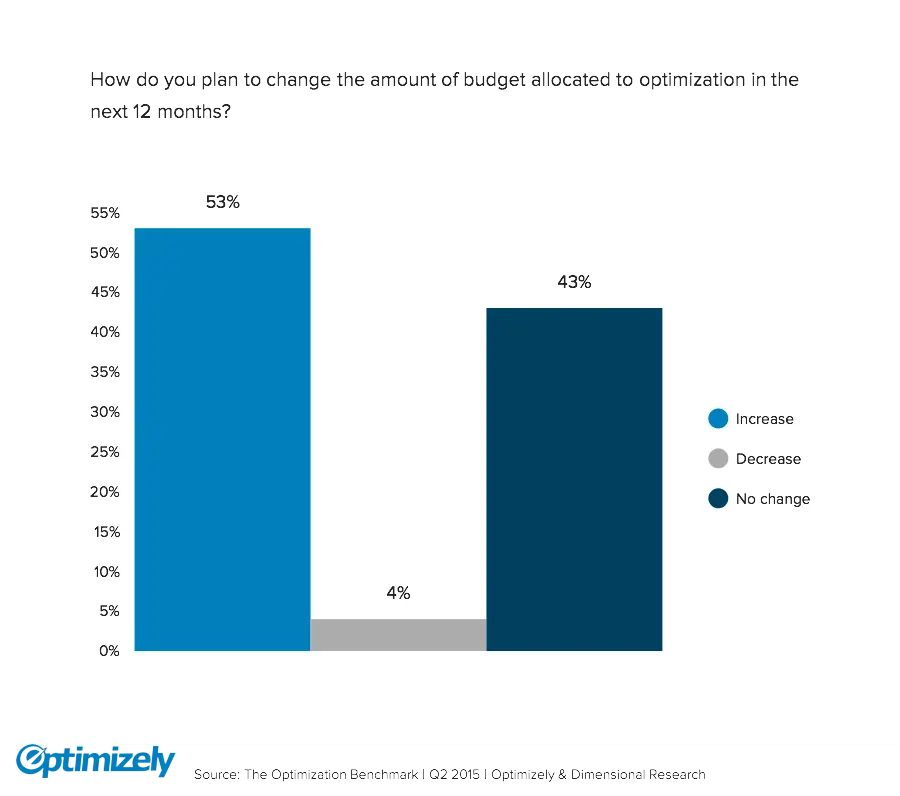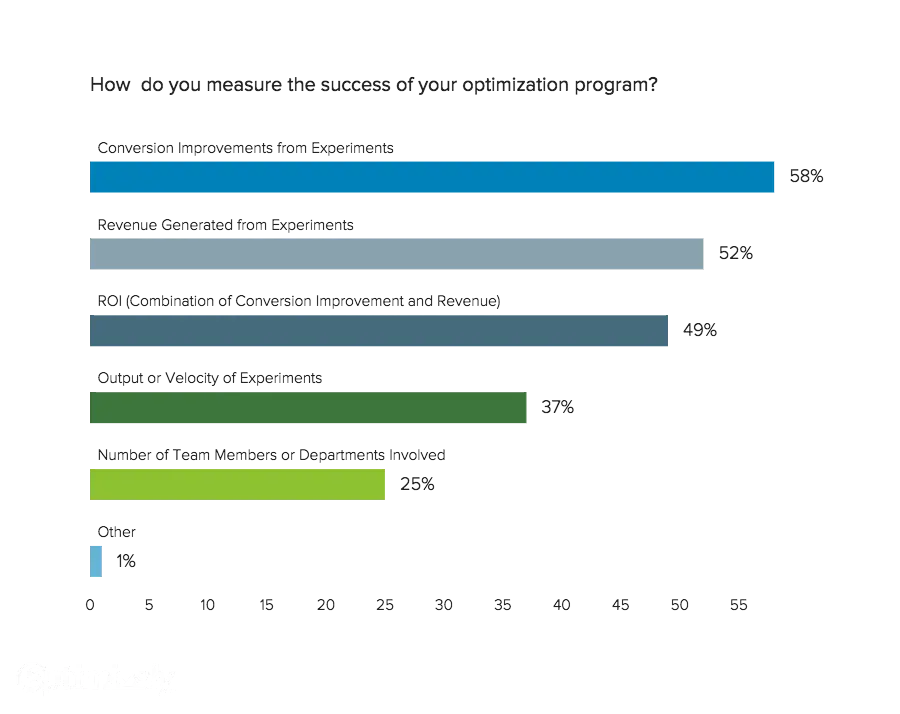A Sneak Peek Into Optimizely’s First Industry Benchmark Report
If you’re making a business case for starting an optimization program, or thinking about how you should grow and scale your team, there are many questions that need to be answered. Our newly-released Optimization Benchmark report includes data on the optimization industry that a number of audiences will find valuable.

Shana Rusonis

“Will optimization improve my marketing ROI?”
“How many people should I have working on optimization at my company?”
“Is the number of experiments I run really an indicator of how successful my optimization will be?”
If you’re making a business case for starting an optimization program, or thinking about how you should grow and scale your team, there are many questions that need to be answered.
Building, scaling, and operating an optimization program requires a coordinated effort of people, processes, and technology. But the best practices for optimization are rapidly evolving and can be hard to pin down.
Introducing the Optimization Benchmark Report
To begin to address these essential questions, we launched a survey (in partnership with Dimensional Research) to understand where optimization is having the biggest impact on businesses today. We also wanted to know just how digital experience architects conduct optimization across web, mobile, and all of their other customer touch points.
We compiled the data from the findings into a comprehensive Optimization Benchmark Report that a number of audiences will find interesting:
- If you’re leading an optimization program, use the findings to benchmark your team’s structure and process, and see how you measure up to your peers.
- If you’re an executive, take a look at the budget projections for the coming year. Consider how optimization fits into your technology stack and process, and the cultural benefits that experimentation can bring to your organization.
- If you’re making a business case for optimization at your company, take a look at the top benefits and key metrics around team size, pacing, and prioritization to illustrate how optimization will impact your business.
Now, what did the data tell us?
Top Benefits of Optimization
We were elated by the findings. We found undeniable evidence that optimization is growing into a dedicated capability that is being allocated significant resources and scaled as a competitive advantage. 98% of the survey participants agreed that optimization is valuable for their
marketing and product success, which tells us that optimization is an online marketing technology critical to the success of their business.

Optimization delivers a host of other benefits, some of which are directly tied to business metrics, and others that help promote the culture of optimization we’re so passionate about here at Optimizely.
Optimization leads to conversion rate improvements and increases ROI (91% and 88% agree), which shows the tremendous quantitative performance benefits optimizers are seeing. The qualitative benefits of improved customer understanding (94%) and building a culture of learning and experimentation (87%) are very promising indicators that optimization programs will only continue to grow and generate positive impact for businesses, becoming stickier as they drive value.
Optimizers still have their challenges; for a full breakdown of what they’re struggling with, check out the complete report.
Optimization Budgets Set to Increase
The choice to invest in optimization, in a time when marketing budgets are under heavy scrutiny, is an inch-by-inch battle. But what we found is that optimization is driving performance and earning additional resources, to the tune of 53% of optimizers planning to increase their budget for optimization in the next year.

When broken out by level, executives were more likely to report planned budget increases (57%) and managers were most likely to plan to spend more (61%).
These optimization programs have staying power, and will budget needs for headcount, software, and other complementary technologies in order to help unlock the maximum potential from their testing.
Want to use these budget stats in your next presentation? Download the full report to get a shareable kit of survey findings as graphs.
Top Success Metrics for Optimization Programs
Of course, increased resources to support optimization come with higher expectations for greater ROI. The top three metrics for measuring optimization success were conversion improvements, revenue, and ROI (at 58%, 52%, and 49% of respondents, respectively).

The total number of experiments run ranked lower in this list of metrics. This could be an indication that although many teams will tout their overall experiment count, it’s not a strong indicator of the optimization program’s success.
These are just a few of the survey findings out of the full report that show how optimization has become an integrated strategy and competitive advantage in marketing, product, and engineering teams at companies of all sizes. What about at your organization – where does optimization rank for you? Do you have dedicated budget for the capability? How many team members are focused on optimization?
The teams who do optimization are becoming more sophisticated by the minute, gathering more resources, and becoming increasingly confident in how they drive business value through optimization.
Take a look at the full report to learn more. The findings are thought-provoking and a great conversation starter to share with your team, clients, or executive champion.
We’d love to hear your take on the results, how they compare with the program you’ve built, and look forward to continuing the discussion around the best strategies for setting teams and companies up for optimization success.
